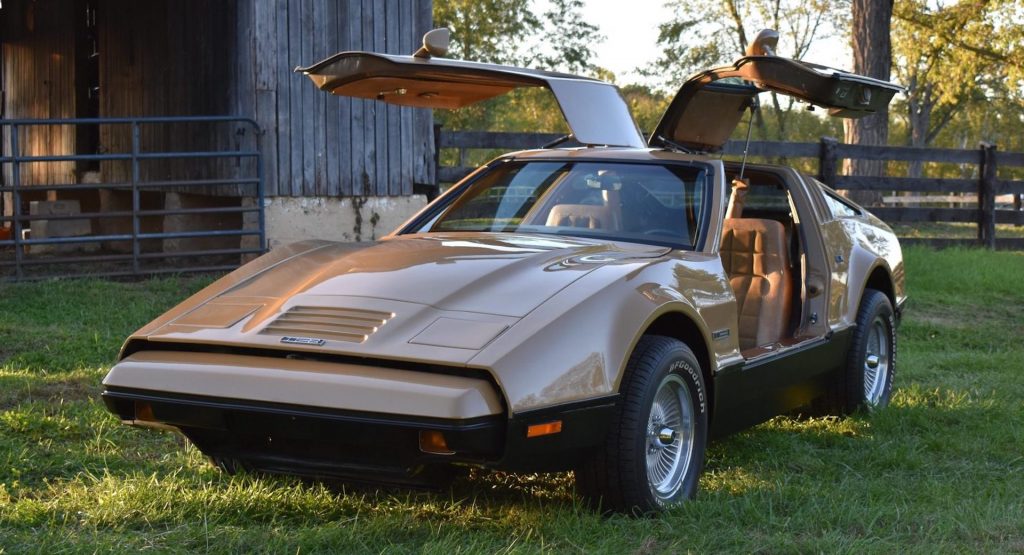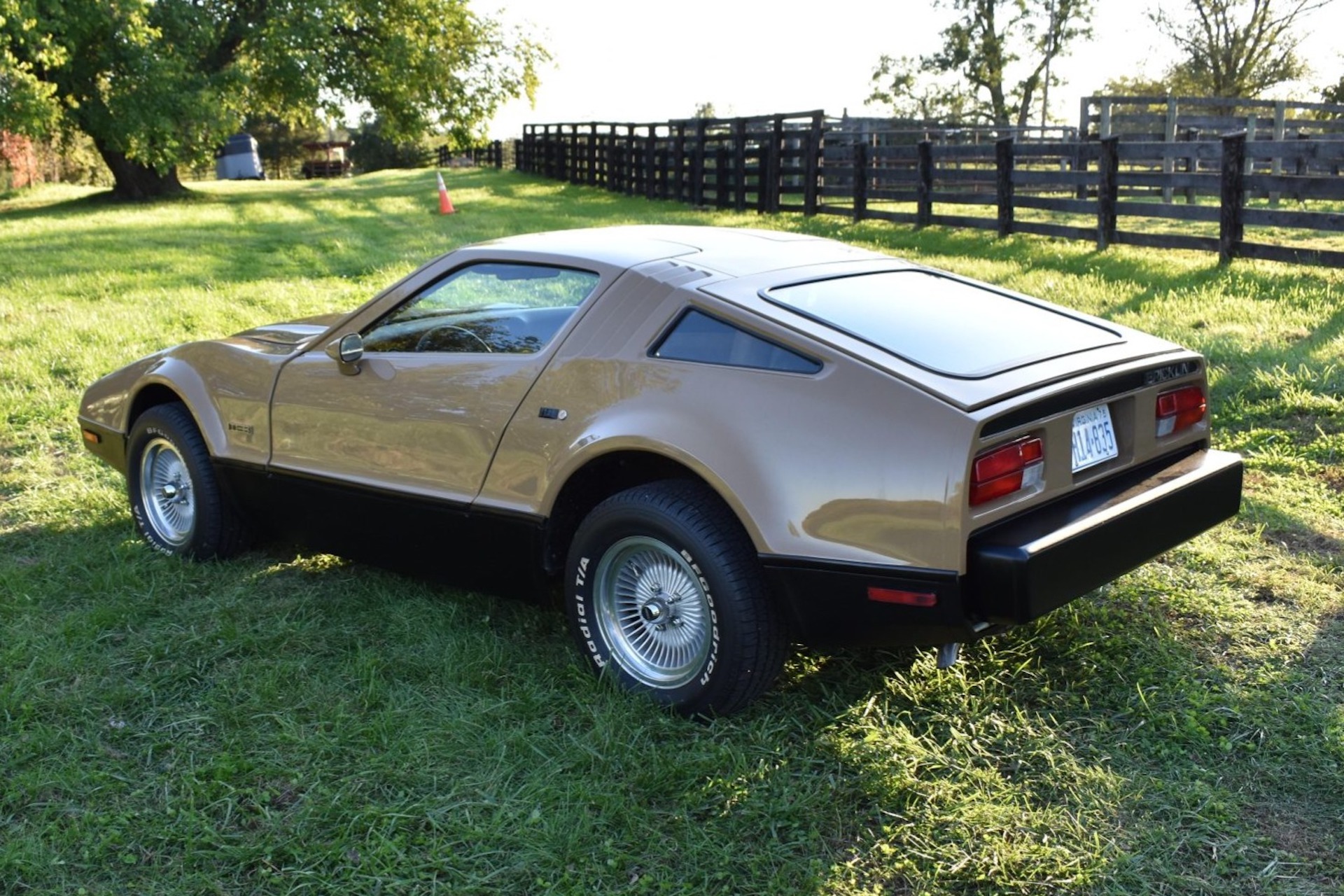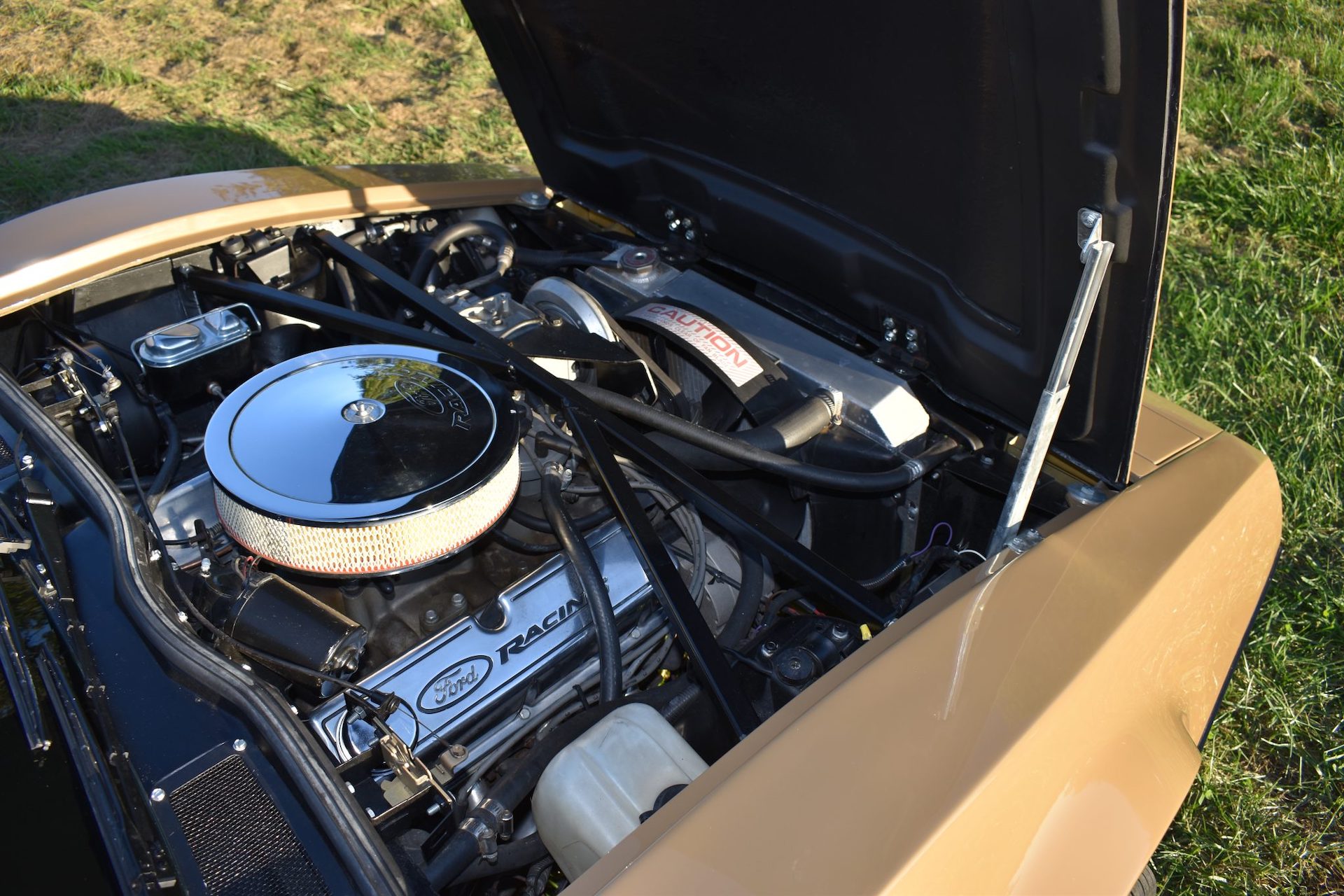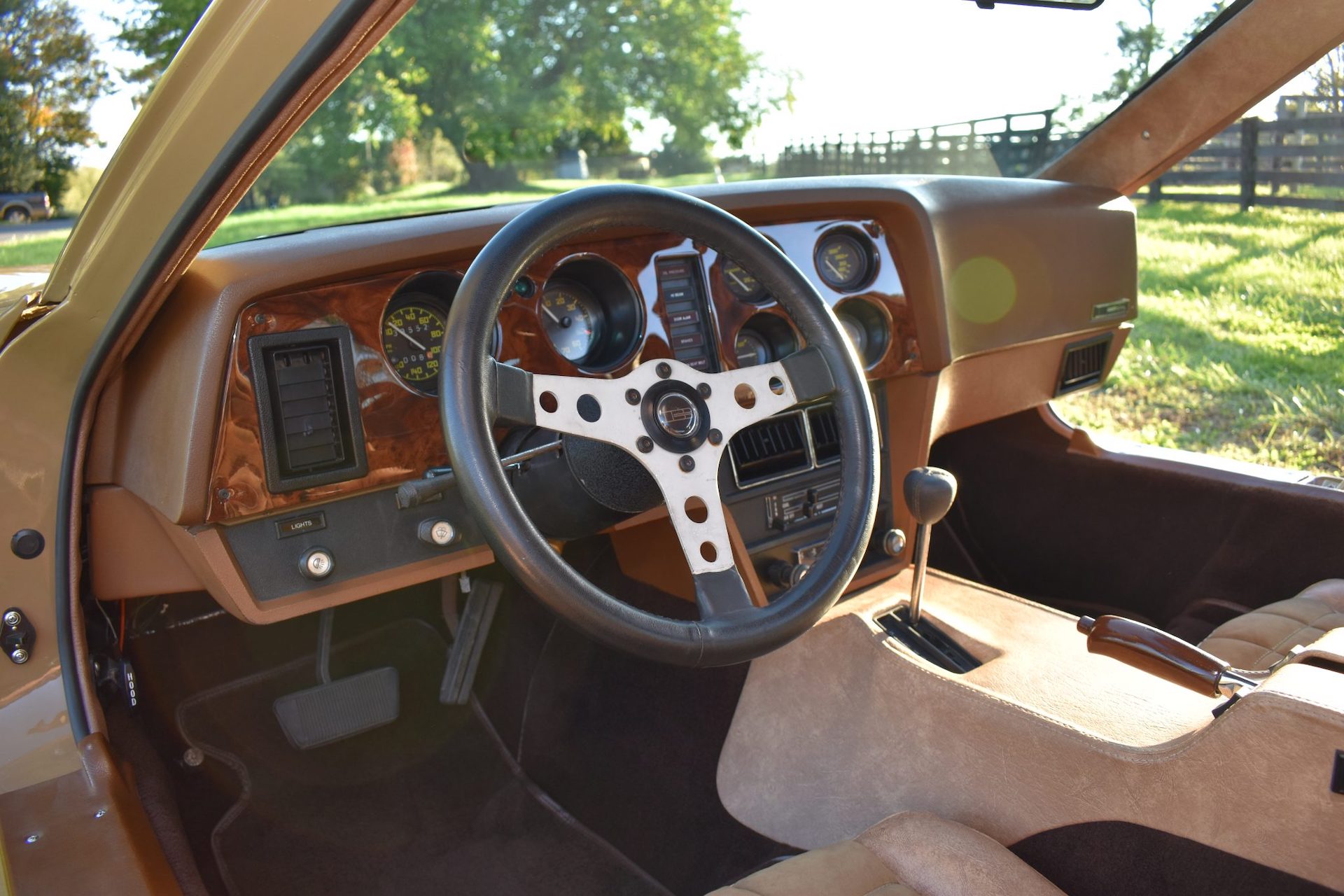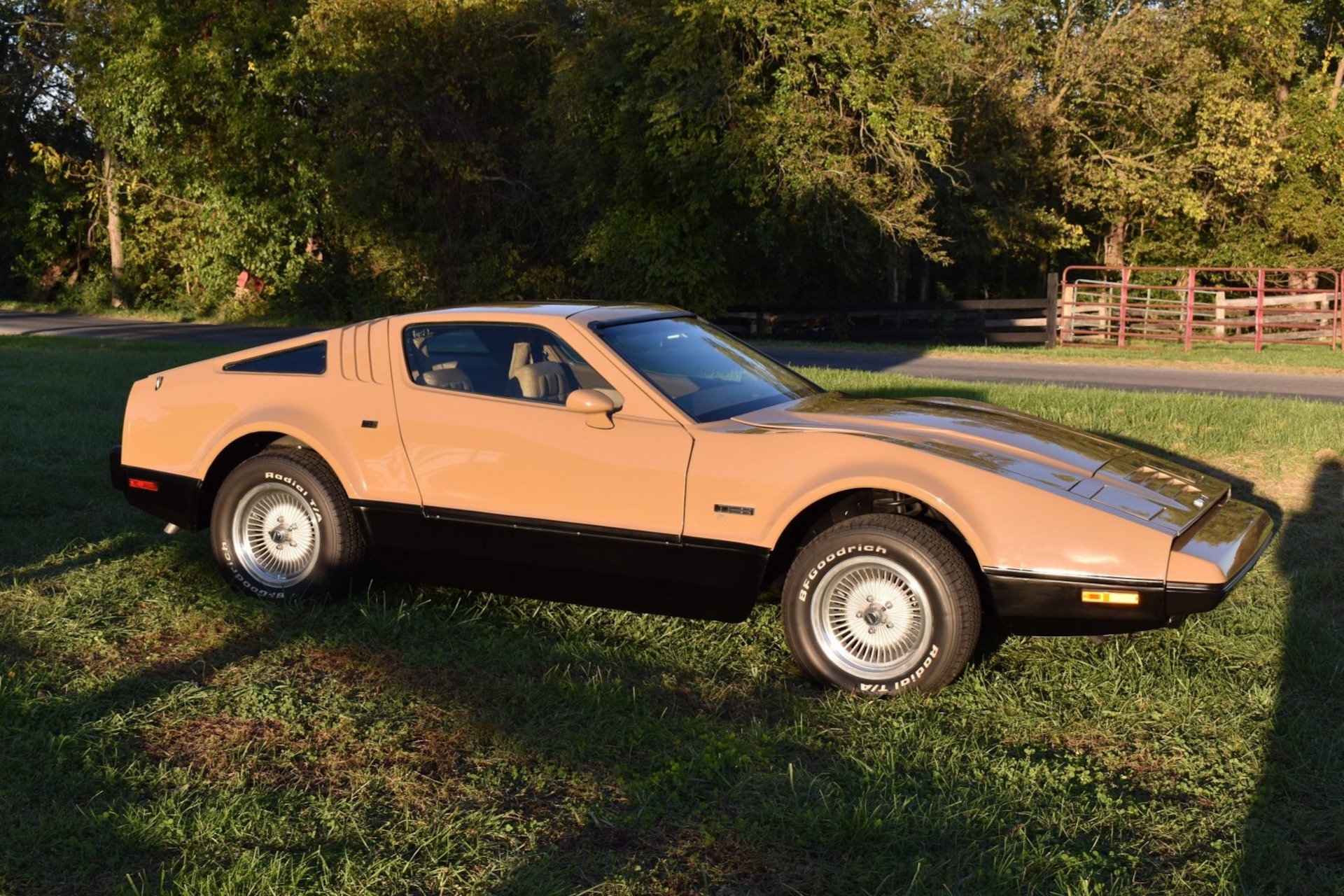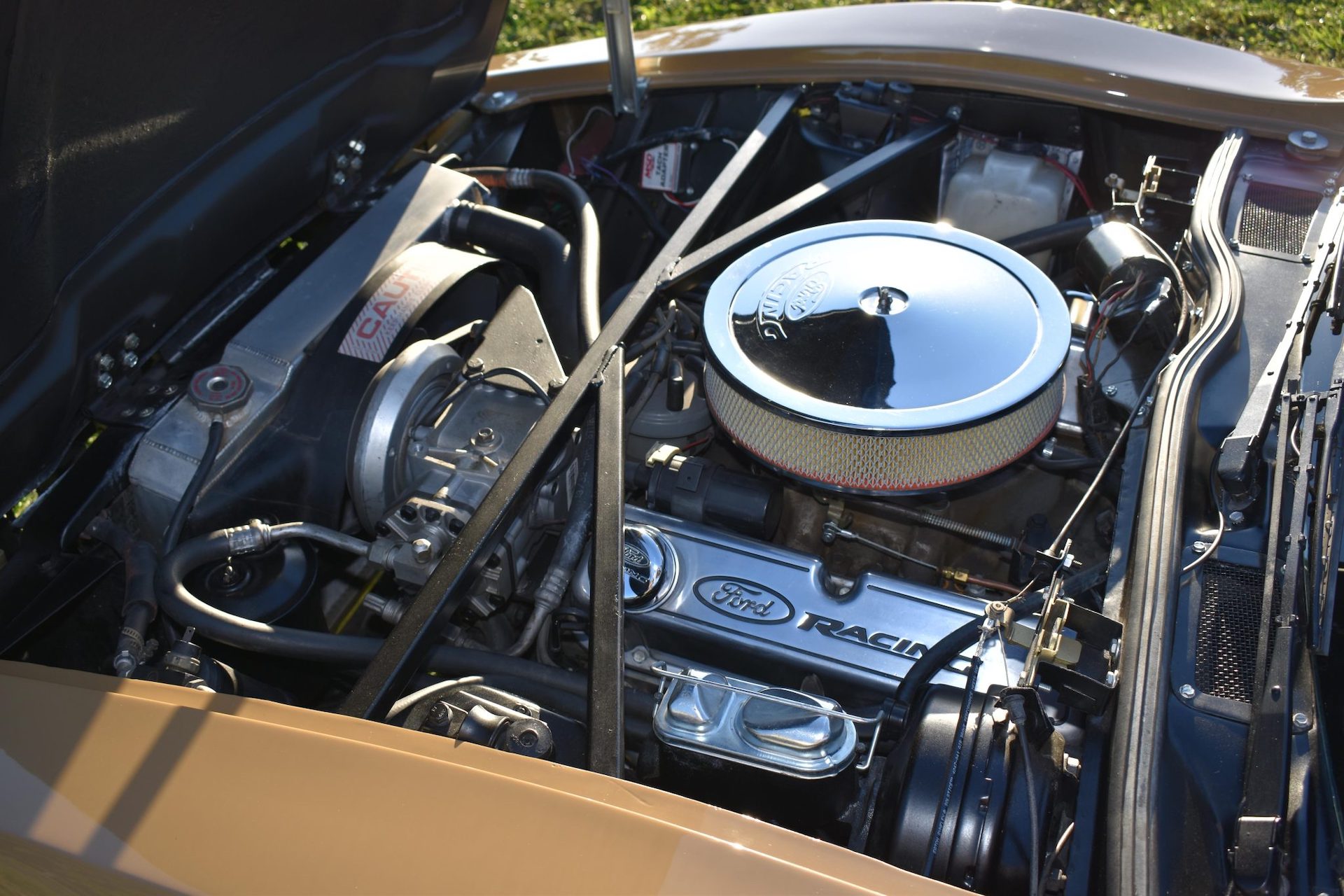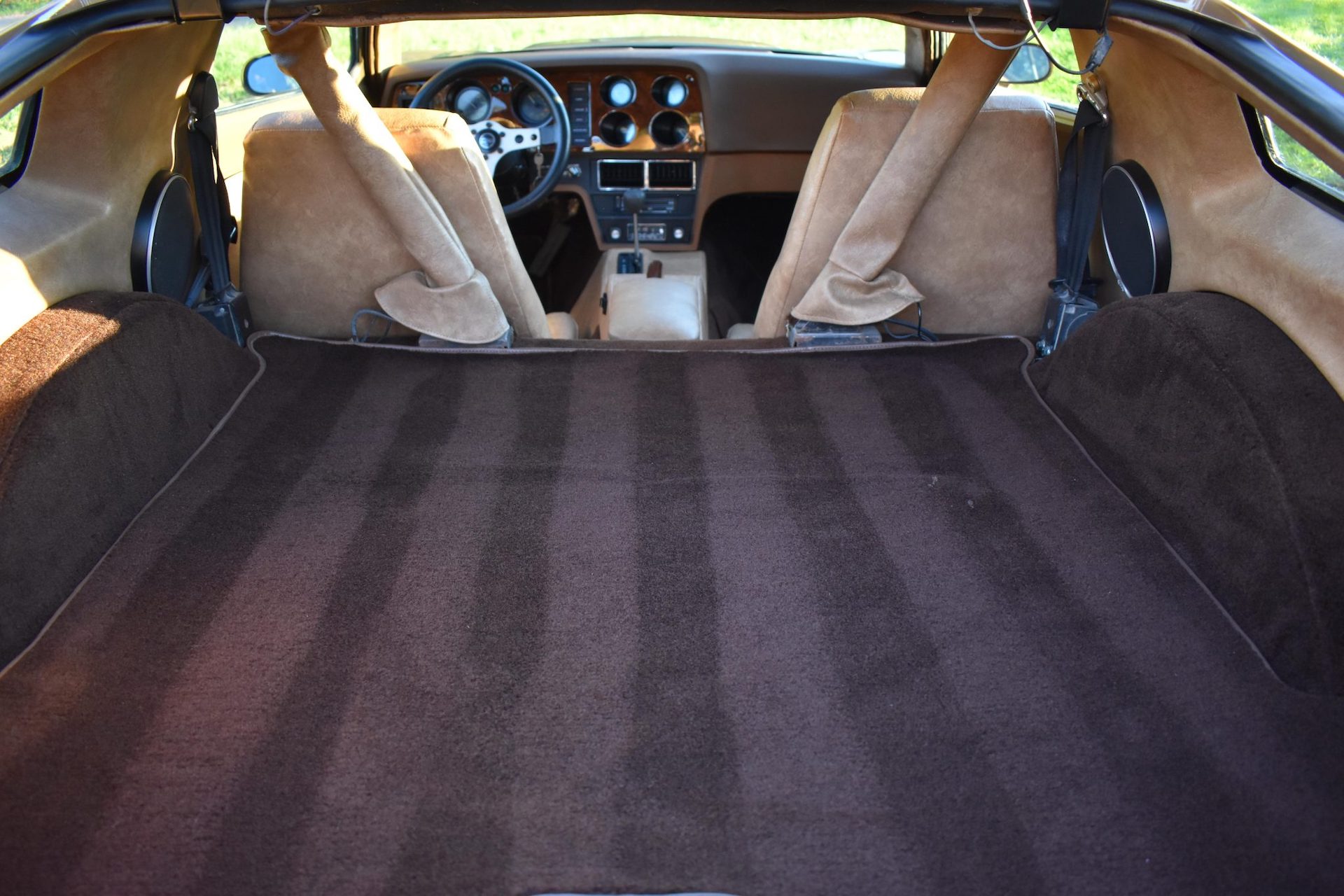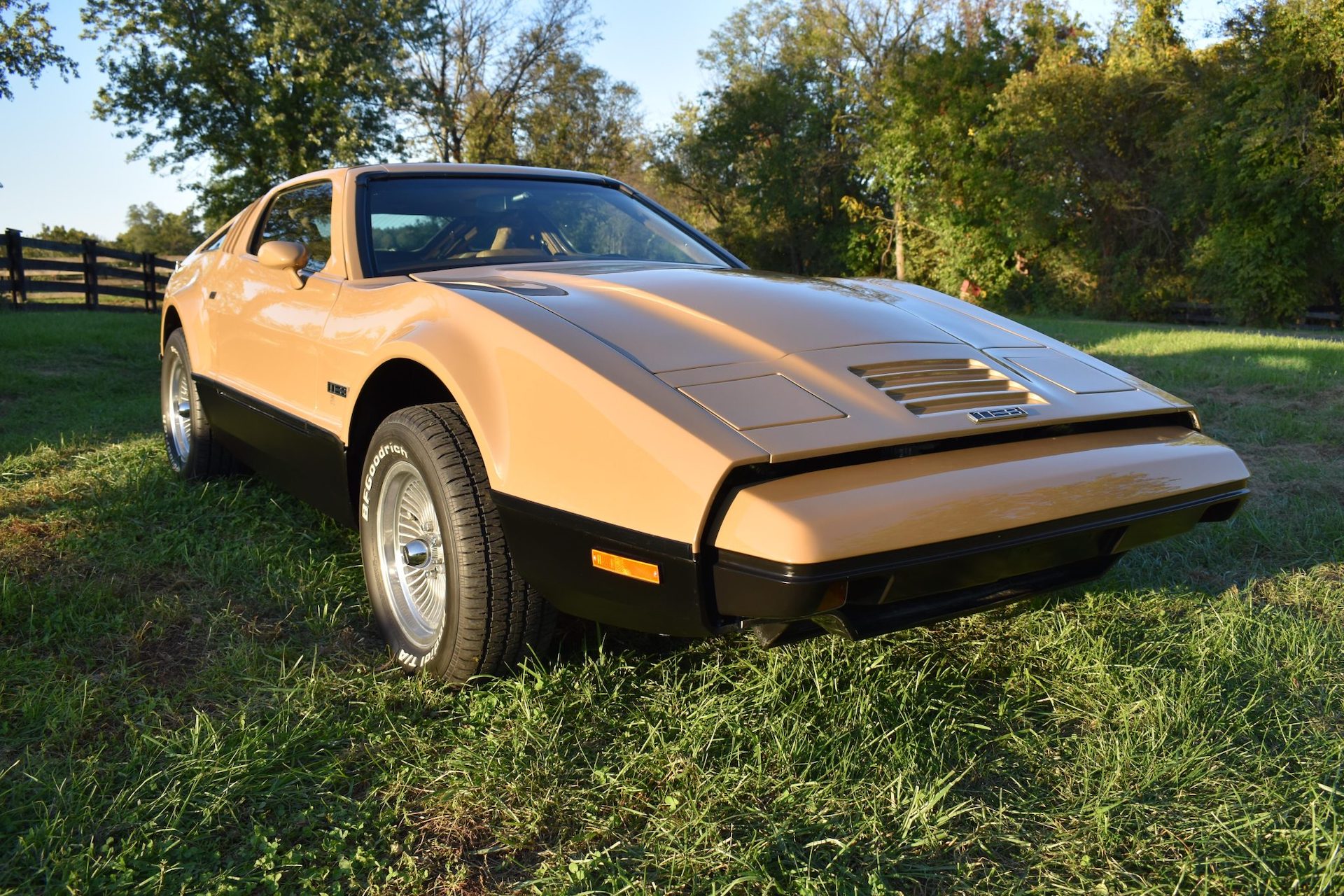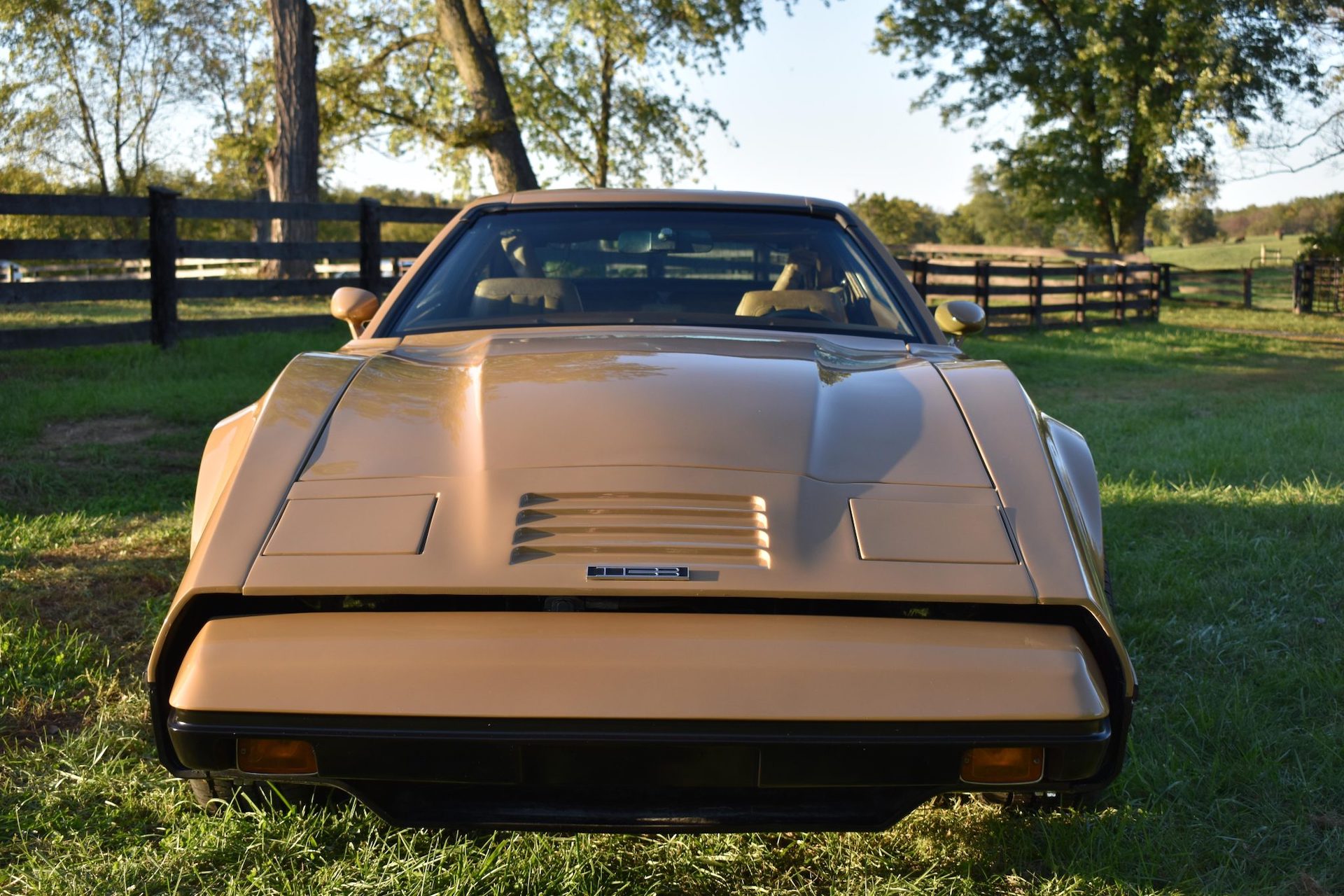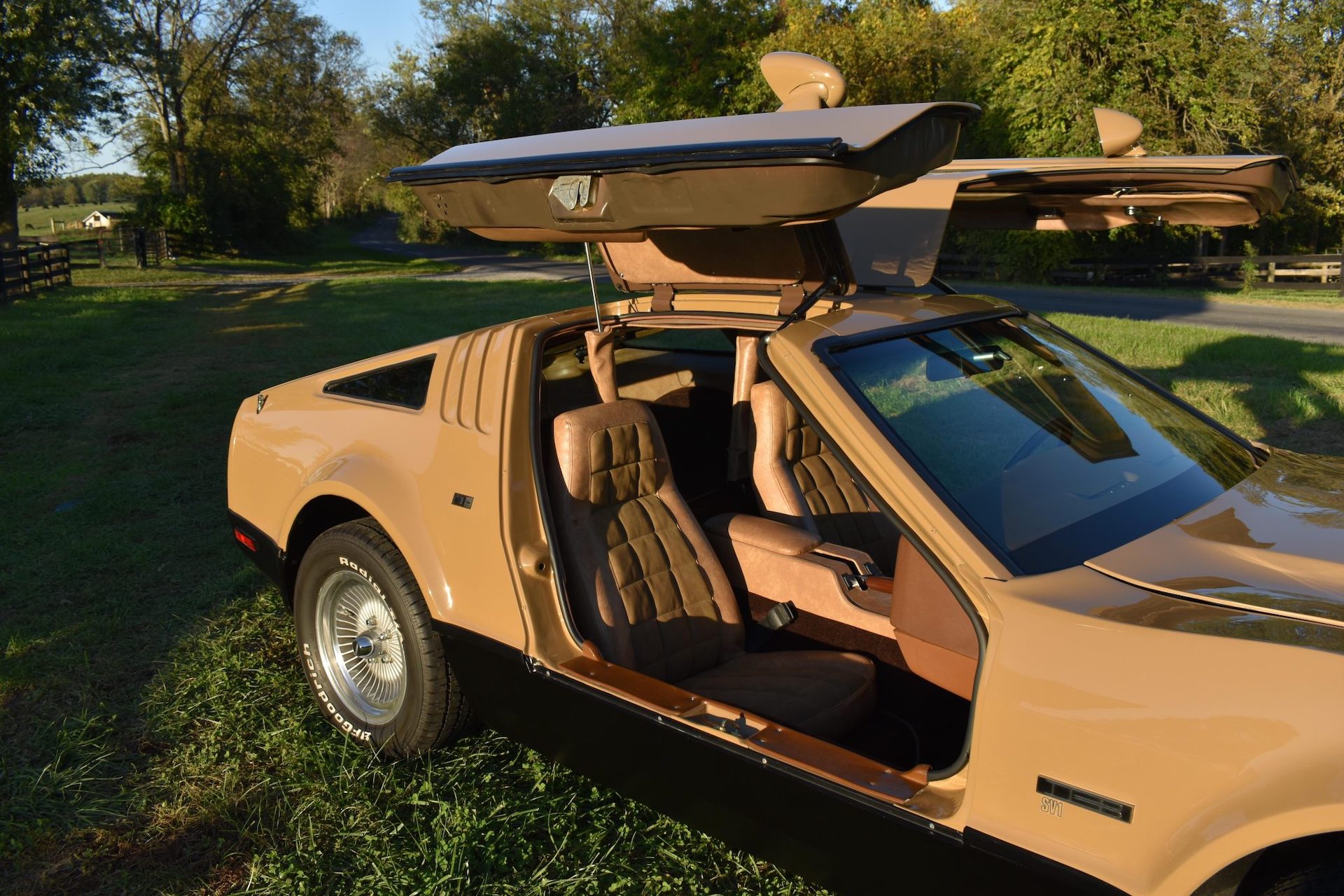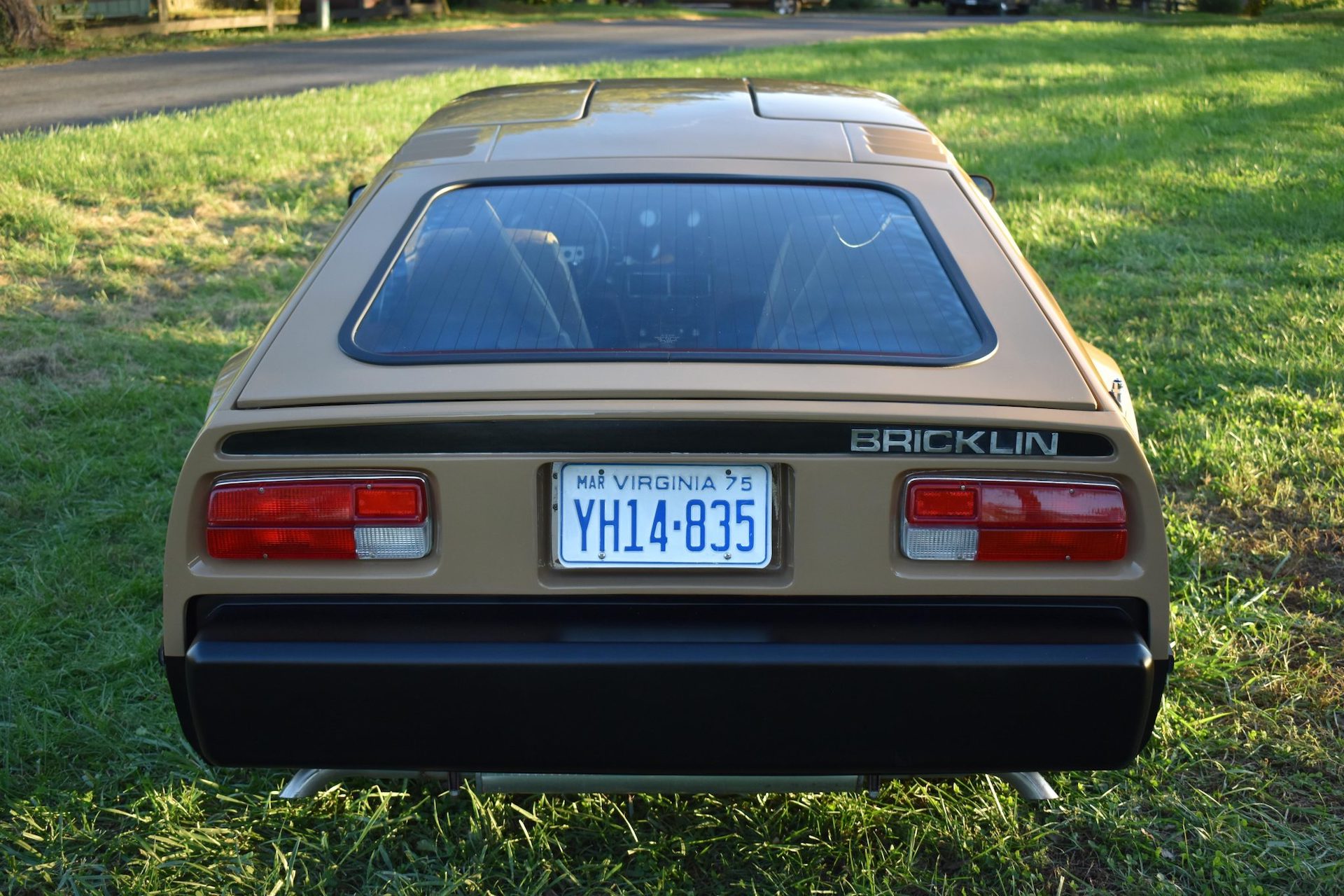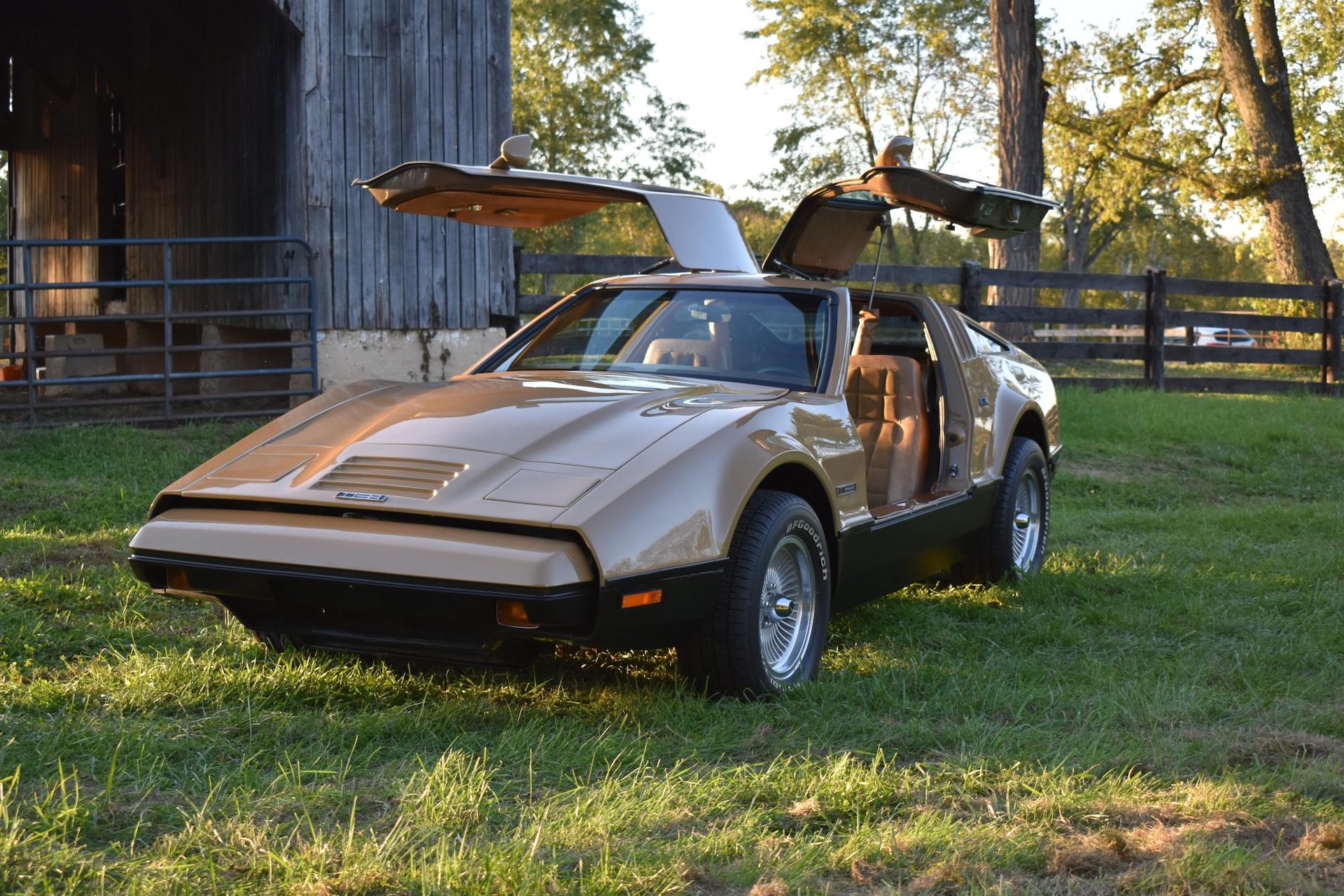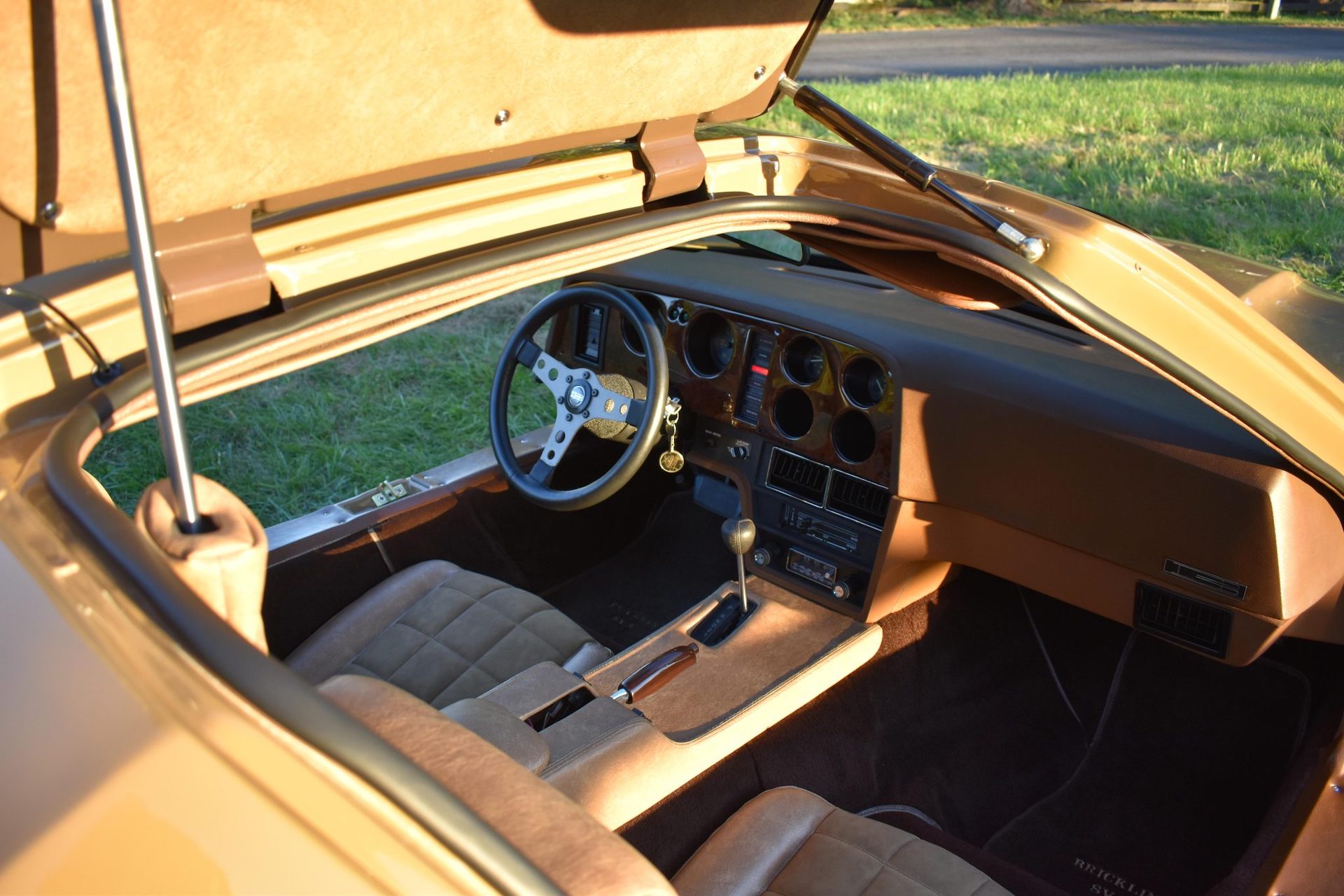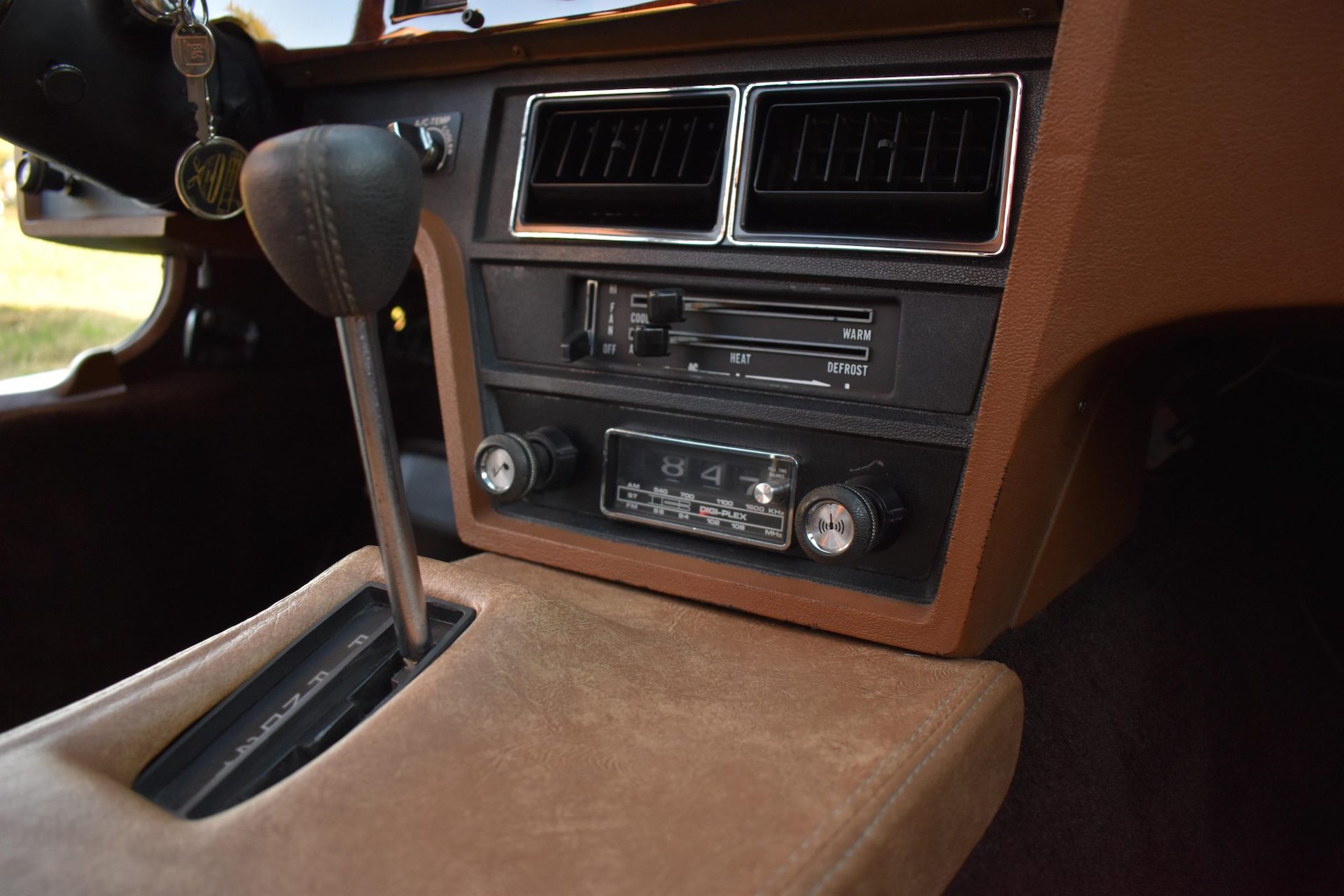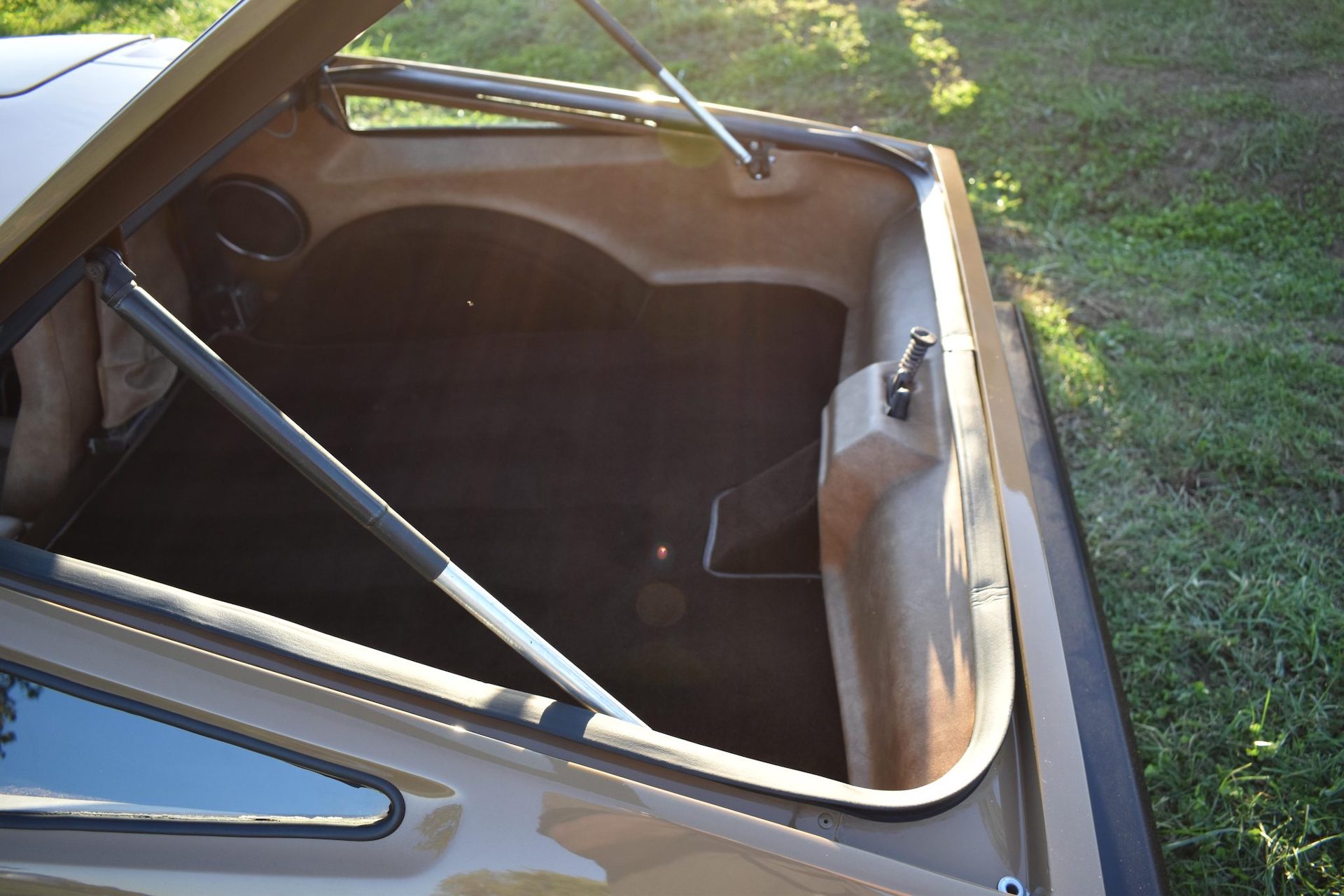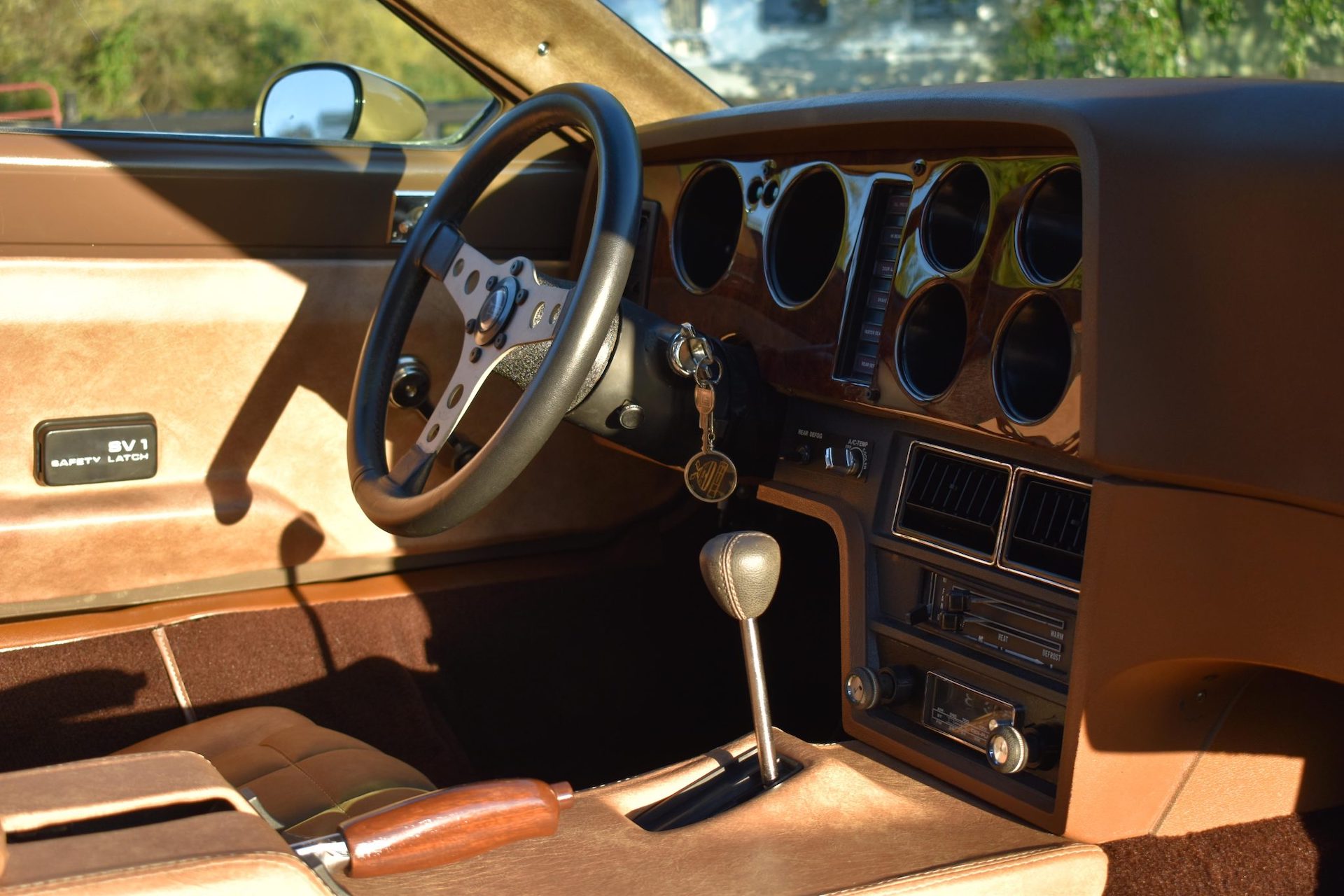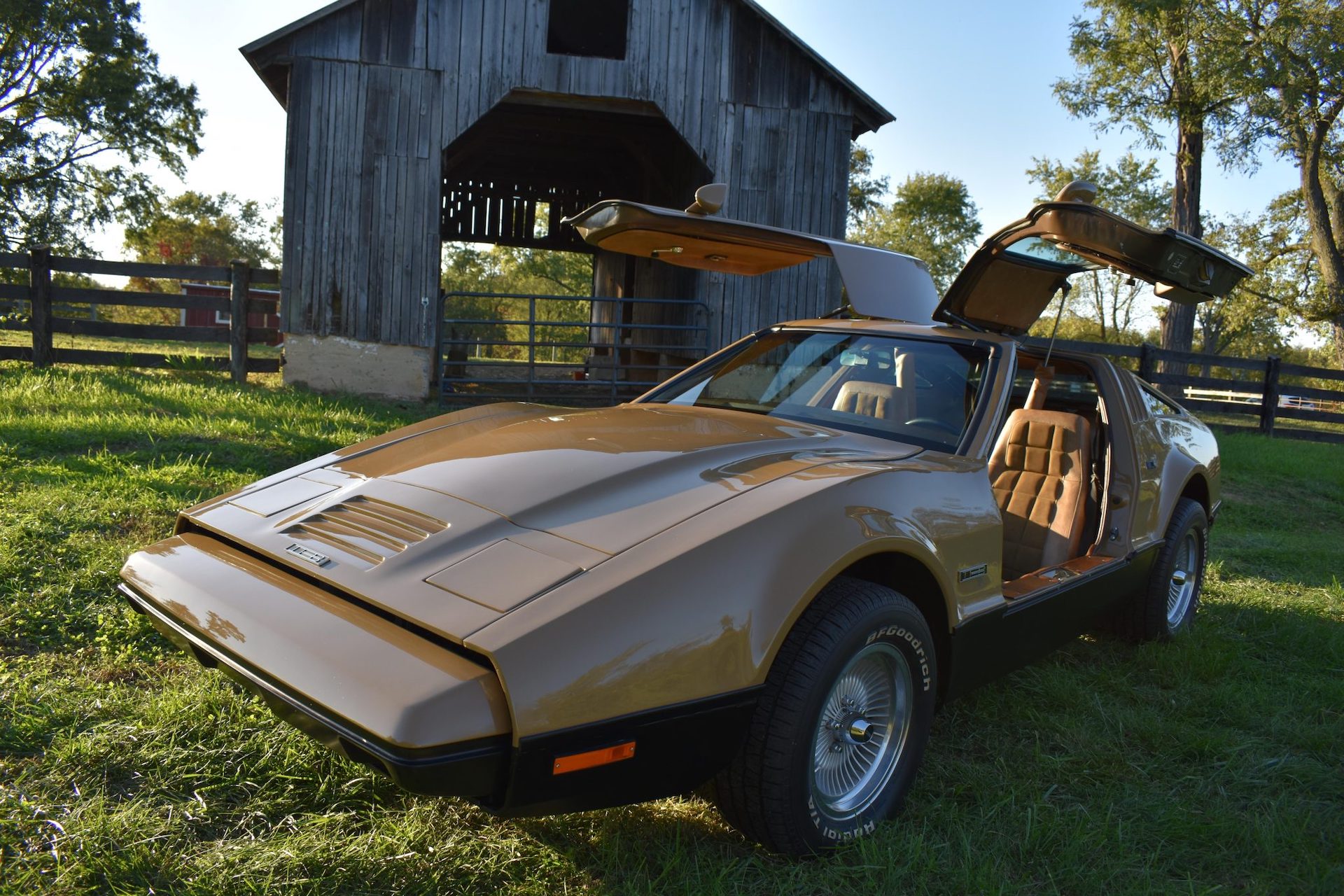Safety is big business the days, and you’ll even find manufacturers of performance cars like Porsche heavily promoting features designed to keep you out of hospital.
In the 1970s that kind of stuff was mostly left to tofu-munching weirdos like Volvo, other carmakers mostly only adding safety gear when the government twisted their arms. One exception came in the unlikely wedgy shape of the Bricklin SV-1.
We’ve referred to the SV-1 (Safety Vehicle 1) as Canada’s DeLorean in the title of his post, but despite the visual similarities the New Brunswick-built Bricklin predates the Belfast-built DMC-12 by half a decade. The brainchild of Malclm Bricklin, who founded Subaru of America and would later bring Yugo to the U.S., the SV-1 featured gullwing doors, a tough fibreglass body covering a steel occupant cell, and energy absorbing bumpers.
Although those bumpers made it look like the SV-1 was giving birth to another SV-1, it was a pretty cool looking car, and the doors were a real party piece in a continent then was denied the Lamborghini Countach. Unfortunately, if you opened one while closing the other you would burn out the electric motor that ran the hydraulic pump.
Related: John DeLorean’s Alleged Son In Legal Row Over Over DMC Three-Wheeler
There was a manual release to help you escape from inside if the battery went flat, but Car & Driver’s 1975 test described trying to heave the 90 lb (41 kg) door up without electrical assistance as feeling “a lot like climbing out of a manhole while a semi-trailer is parked on the cover”.
That same C&D test revealed that getting to 60 mph was similarly taxing. Earlier SV-1s had a 220 hp AMC 360 cu-in (5.9-liter) V8 mounted up front with a choice of manual or automatic transmissions, but by 1975 that had been junked for a feeble 175 hp Ford 351 (5.8-liter) that could only be mated to a three-speed auto and needed 8.3 seconds to hit 60 mph. Even Chevy’s base C3 Corvette, by this point saddled with a single exhaust and making a pathetic 165 hp from its 350 (5.7-liter) motor, managed 7.7 seconds to 60 mph in the same test.
The C&D test team also slated the Bricklin’s headroom, driving position, seat comfort, visibility and dull sedan-like handling, though it was more likely the rapidly rising MSRP and build quality problems that resulted in the SV-1 finding just 3,000 buyers before it was killed of in 1975.
Forty-five years down the road we can cut the Bricklin a bit more slack. It’s an interesting, unusual classic with a great backstory, and this one, which is currently available on Bring-a-Trailer, looks to be a great example. Fitted with a crate 351 and much bigger carb than the car ran when new, plus a Lentech four-speed automatic in place of the stock three-speeder, it should be noticeably quicker, as well as more fun to drive.
It also benefits from a repaint in Safety Suntan, new interior upholstery, and the sun visor is even signed by Malcolm Bricklin himself. Like the idea of driving a quirky Canadian sports car? If you do, get your bids in by Sunday, December 12.




